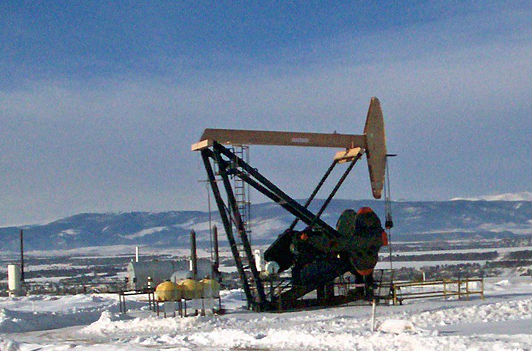Oil Sands: Is Utah the New Alberta?

Think oil sands and Alberta comes to mind. Don’t tell that to Canadian oilmen in Utah, though, who expect to begin production at the first commercial oil sands mine in the United States by year’s end.
On June 24, U.S. Oil Sands Inc., based in Calgary, got approval from the Utah Department of Natural Resources’ Division of Oil, Gas and Mining for changes to the PR Spring project being built about 200 miles southeast of Salt Lake City. The company has agreed to submit a plan by Nov. 1 for monitoring the quality of air and water at the project.
“We’ll be in production later in the fall with commercial production before the end of the year,” U.S. Oil Sands Inc. chief executive Cameron Todd told the Financial Post, the Canadian business newspaper. Output at the mine is expected to total 2,000 bpd.
While this is the first mine in the United States dedicated to oil sands, it won’t be the first time the gritty, tarry substance has been used in the country, for example as ingredients in building Utah’s first roads. So far there are more than 50 known oil sands deposits in the state, together holding an estimated 20 to 32 billion barrels of oil.
U.S. Oil Sands has spent nearly $100 million to develop the mine, including the cost of permits, equipment and even a new method of extraction. The company says this technology not only has a small above-ground footprint, but also needs 50% less energy than conventional oil sands projects to extract oil, it also recycles 95% of the water used and needs no tailing ponds.
A key to this technology is the use of the citrus extract d-Limonene, a solvent extracted from orange rinds that’s already used in an industrial cleansers. U.S. Oil Sands will used d-Limonene to separate the oil from the sand in which it is embedded.
Approval of the PR Spring mine didn’t come without a fight. At a public hearing on the matter June 30, William Johnson, a University of Utah geologist, said his studies showed that groundwater in the area of the project would be vulnerable to mining.
“Unfortunately every decision that has been made to date is the [same] as looking out at the sky today and saying it is impossible that water can fall from the sky, and I find that infuriating,” Johnson said.
John Davis, a lawyer for U.S. Oil Sands, responded, “The entire record demonstrates that there will be no impact on groundwater because there is no measurable ground record on site.” The Utah Division of Water Quality agreed, saying any impacts to groundwater from the mining operation would be “minimal.” That conclusion later was upheld in a ruling by the Utah Supreme Court.
The Utah mine is costing only about one-third of what’s being spent to develop larger mines in northern Alberta. The yearlong drop in oil prices and the costs for expanding mines in the region is roughly $100,000 per barrel. As a result, the Colorado think tank IHS issued a report last week saying it expects such expenses will limit Canadian oil sands production.
IHS said Canadian output will increase by 800,000 bpd to about 2.9 MMpd by 2020. Last year, before oil prices began their decline, IHS had expected output growth to be greater by 280,000 bpd.
The think tank said its current projection is based on the assumption that current low oil prices won’t interfere with any projects now being built. Further, it says that in the longer term, growth in Canada’s oil sands industry will continue because it is cost-competitive with expensive procedures such as deep-water drilling and hydraulic fracturing, or fracking, to extract oil from shale.
Related News
Related News

- Keystone Oil Pipeline Resumes Operations After Temporary Shutdown
- Biden Administration Buys Oil for Emergency Reserve Above Target Price
- Freeport LNG Plant Runs Near Zero Consumption for Fifth Day
- Enbridge to Invest $500 Million in Pipeline Assets, Including Expansion of 850-Mile Gray Oak Pipeline
- Williams Delays Louisiana Pipeline Project Amid Dispute with Competitor Energy Transfer
- Evacuation Technologies to Reduce Methane Releases During Pigging
- Editor’s Notebook: Nord Stream’s $20 Billion Question
- Enbridge Receives Approval to Begin Service on Louisiana Venice Gas Pipeline Project
- Russian LNG Unfazed By U.S. Sanctions
- Biden Administration Buys Oil for Emergency Reserve Above Target Price




Comments